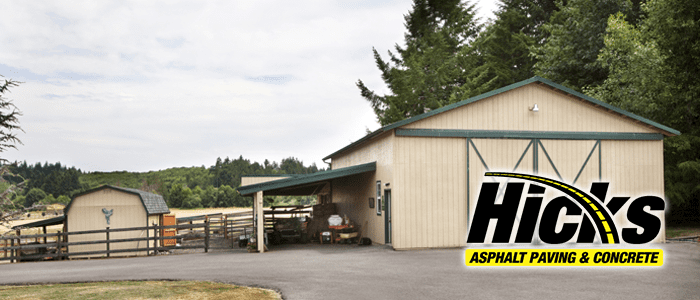Concrete is a heavy, rough building material made from a mixture of broken stone, gravel, sand, cement, and water. The first “concrete” was made by crushing and burning gypsum or limestone. When water and sand were added to these cements, it created mortar, or a plaster-like material, used to make stones stick together. It can be spread or poured into molds and solidifies. Traditionally, pavers use it for sidewalks, buildings, outdoor furniture, and bridges. It has advanced greatly since it was first created.
A Little History
Concrete was seen for the first time around 6500 B.C. It was being used by the Nabataea traders in Syria and Jordan. Now, remember, this wasn’t exactly the same thing that we use today. It was the crushed limestone being mixed with water and sand. The mixture was rubbed on the inside and outside of their homes and it would react with the air. It created a hard shell on their homes and on the walls that helped keep them cool from the sun. They also used it for underground cisterns. The cisterns were kept hidden though, which is why they were able to thrive in the hot, dry climate.
Building with Concrete
3000 B.C is when it was first being used to build. Egyptians used about 500,000 tons of mortar made from the lime or gypsum mixtures. They also started mixing straw with mud to form bricks. China was also using these mixtures in building boats and the Great Wall of China. They used glutinous, sticky rice as the key mortar used in building the Great Wall.
Then, the next civilization to discover concrete was Rome. Around 600 BC, the Greeks started using it widespread. By 200 B.C., they had started utilizing it in a majority of their construction. The mixture they used was volcanic ash, lime, and seawater. This mixture was named pozzolan cement. They packed this mixture into wooden frames to create blocks, which were then stacked like bricks.
Modern Concrete
Modern concrete still has the same base ingredients as those named above, but a few other things have been added. It starts with an aggregate and a binder. An aggregate is a crushed, rocky material, consisting of limestone or granite along with sand. The binder is made up of cement. Portland cement is the most common type of binder. Binders are mixed with the aggregate and water, which creates a semi-water material that can be shaped by pouring it into a form or mold. The concrete then dries and hardens in a process called hydration. Portland cement concrete is usually reinforced with steel rods because it has high compressive strength, but low tensile strength.
Concrete vs. Cement
Cement and concrete are used interchangeably, but concrete is made up of cement. They are not the same thing. Cement is one of the base ingredients needed when making concrete. Concrete is made from 10-15% of cement, depending on the volume. Cement is what holds all the aggregate together. It is, in sense, the glue to all the pieces. Cement is usually used alone for smaller projects, such as filling cracks, specialized masonry, and grouting. Concrete is used in much larger projects like bridges, buildings, and sidewalks, it also lasts much longer and is a bit stronger.





